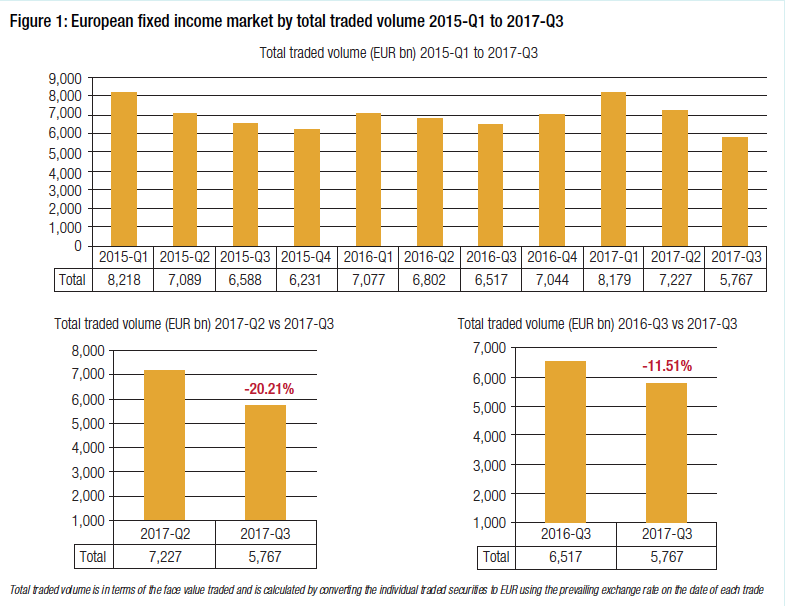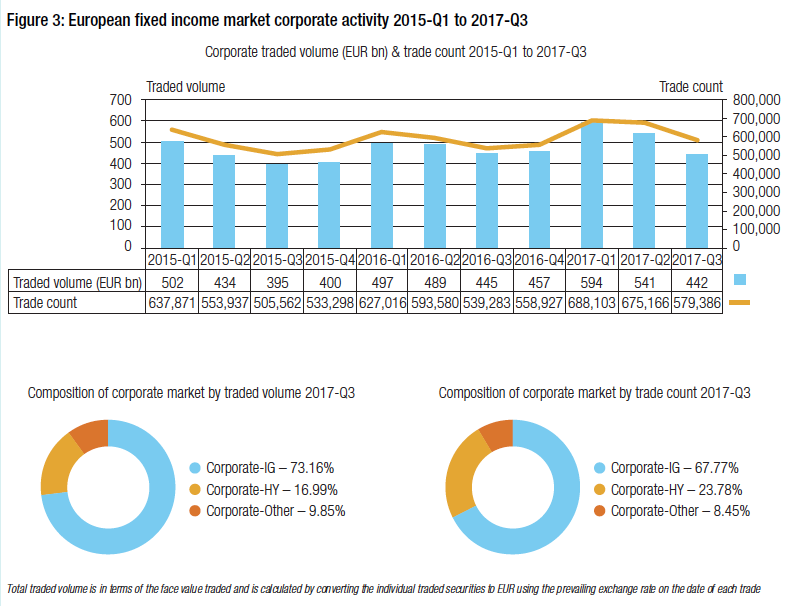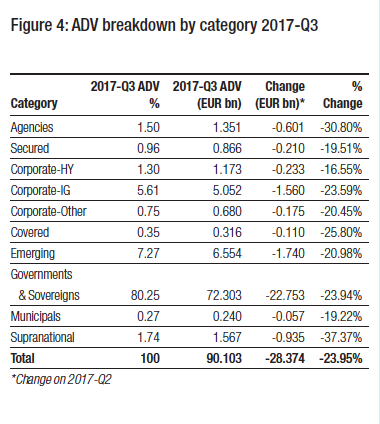With Torben Munch, CEO, Itiviti
 As financial firms outsource more technology, there is pressure on service providers to compete.
As financial firms outsource more technology, there is pressure on service providers to compete.
Itiviti, backed by Nordic Capital Fund VII, announced its intention on 28 November to combine with Ullink to build a full service technology and infrastructure provider for global and regional financial institutions. The deal is likely to be closed within the first half of 2018 after it has gained anti-trust approvals. GlobalTrading spoke with Itiviti’s CEO, Torben Munch
What is the business logic behind the merger?
It is a merger of equals, with each firm providing complimentary areas of expertise and commercial penetration. Basically, Itiviti and Ullink are approaching the financial trading community from two different angles, but with the same underling objective. It is a partnership that should create a one-stop shop for global market participants, and which will build on a subset of clients who are already using Itiviti and Ullink products and services.
Describe Itiviti’s key activities and core strategy.
Itiviti has developed its business activities substantially during the past five years, moving from an emphasis on futures and options trading to cash equities, then to foreign exchange. Its client base has evolved, shifting from a fairly exclusive focus on proprietary traders and market makers within banks to offering DMA and DEA services to the wider financial trading industry. It is becoming an increasingly electronic trading world, especially in cash equities, derivatives, foreign exchange and commodities. We aim to capture that growth.
The trading space is like a race track for Fintech software, but not everyone needs a race car. Some clients are, of course, less latency sensitive and we will continue to facilitate their order routing and trade execution.
More recently, the firm has also invested in the technology and skills that provide its clients with more efficient FIX messaging systems and, most significantly, connectivity. We have been expanding our focus, and that growth will be augmented by the merger.
How does the merger with Ullink enhance your strategic objectives?
Ullink is preeminent in high touch and low touch order management systems and supplies the world leading NYFIX network that provides clients with hub-and-spoke connectivity. Ullink has 1500 clients, of whom about 800 are buy-side firms largely using the company’s connectivity services. Itiviti’s 360 clients are mostly banks and brokerages, so there is huge potential for expansion for the company’s trade execution technologies among asset managers and trading platforms. The merger will be defined by its complementary synergies rather than any business duplication or overlap.
Do you see a rising trend among buy- and/or sell-side firms for outsourcing technology and systems?
Definitely – and there are four main aspects of this trend: First, tier one and tier two financial companies recognise the flexibility of outsourcing software to third parties; second, more and more institutions want to consolidate disparate trading platforms, both by functional and asset class, into fewer platforms; third, after implementation of MiFID II there will be an increasing demand to match technology capability with regulatory requirements – so called, RegTech; and fourth, the trajectory towards greater trade automation is undiminished. Underlying these four forces that are driving the move to greater outsourcing are the expectations of cost-savings.
What are the toughest challenges when working to meet a client’s technology goals?
Legacy systems, typically developed in the 1990s, are often cumbersome, sometimes expensive to maintain and usually inflexible. Financial firms increasingly need systems that are more lightweight and nimble. However, it can be a difficult process to dismantle them and transition should be gradual to prevent damaging disruption to commercial operations.
Both Ullink and Itiviti have large, well-trained customer services staff to help ease the migration of legacy systems to more efficient processes. Introducing new systems not only requires engineering expertise, it is also means consulting skills and offering the capacity to tackle difficulties as they arise.
We’d love to hear your feedback on this article. Please click here












 The traditional build or buy dichotomy is being eroded by the costs incurred to keep pace with persistent regulatory changes and rapid technological advances.
The traditional build or buy dichotomy is being eroded by the costs incurred to keep pace with persistent regulatory changes and rapid technological advances. However, it is expensive and there is a risk that the project loses its discipline, becomes unfocused, and is vulnerable to staff or departments pursing their own agendas – and even to a new chief technology officer keen to make their individual mark. Although there have been some successes, there have been many disasters. The alternative, a vendor-supplied tech stack, can be scaled for individual requirements, made fit for purpose and can easily be adjusted for future needs. On the other hand, the firm is tied to a particular vendor, which can reduce flexibility and potentially creates legacy burdens later. In the past, larger firms tended to build their own stacks and smaller firms used a vendor, but there is a change underway.
However, it is expensive and there is a risk that the project loses its discipline, becomes unfocused, and is vulnerable to staff or departments pursing their own agendas – and even to a new chief technology officer keen to make their individual mark. Although there have been some successes, there have been many disasters. The alternative, a vendor-supplied tech stack, can be scaled for individual requirements, made fit for purpose and can easily be adjusted for future needs. On the other hand, the firm is tied to a particular vendor, which can reduce flexibility and potentially creates legacy burdens later. In the past, larger firms tended to build their own stacks and smaller firms used a vendor, but there is a change underway. For instance, Fidessa supports more than 200 equity and futures markets globally. Each of these might introduce two upgrades a year prompted by regulatory or other requirements. And so 400 necessary adjustments need to be made to Fidessa’s systems before any value-added improvements are made. This overhead only makes sense if the cost can be shared over multiple clients.
For instance, Fidessa supports more than 200 equity and futures markets globally. Each of these might introduce two upgrades a year prompted by regulatory or other requirements. And so 400 necessary adjustments need to be made to Fidessa’s systems before any value-added improvements are made. This overhead only makes sense if the cost can be shared over multiple clients. So, firms are examining the best way to use third-party components in their tech stack, working out ways to glue the pieces together. A typical choice is to amalgamate static or reference data into one securities master storage centre, and Fidessa and other vendors have created systems shared by leading financial firms and implemented across different asset classes.
So, firms are examining the best way to use third-party components in their tech stack, working out ways to glue the pieces together. A typical choice is to amalgamate static or reference data into one securities master storage centre, and Fidessa and other vendors have created systems shared by leading financial firms and implemented across different asset classes.
 At a time of global passive indexation and an electronic order book environment that naturally leads to small average trade sizes, investors who wish to outperform benchmarks are calling for innovation in electronic block trading.
At a time of global passive indexation and an electronic order book environment that naturally leads to small average trade sizes, investors who wish to outperform benchmarks are calling for innovation in electronic block trading.






 Today’s trader needs to be able to connect to their counterparties, find liquidity, transact and prove best execution, with fewer resources than in years past. Fortunately, the rise of open trading platforms across the industry is helping to make this ask a reality, incorporating the key functions they require across the full trade life cycle, from pre-trade through post-trade.
Today’s trader needs to be able to connect to their counterparties, find liquidity, transact and prove best execution, with fewer resources than in years past. Fortunately, the rise of open trading platforms across the industry is helping to make this ask a reality, incorporating the key functions they require across the full trade life cycle, from pre-trade through post-trade.